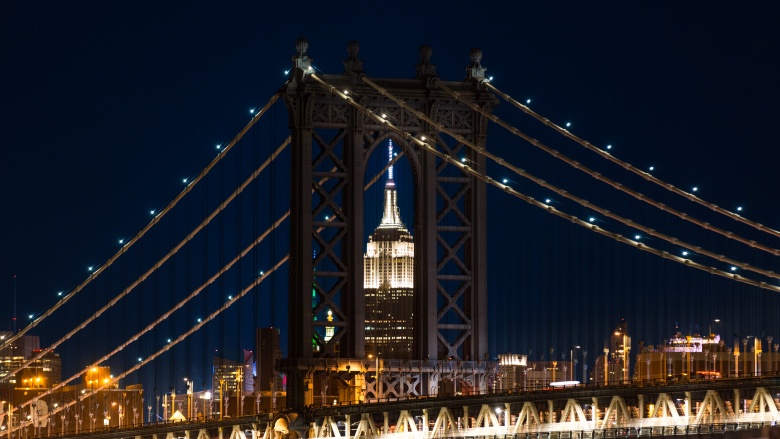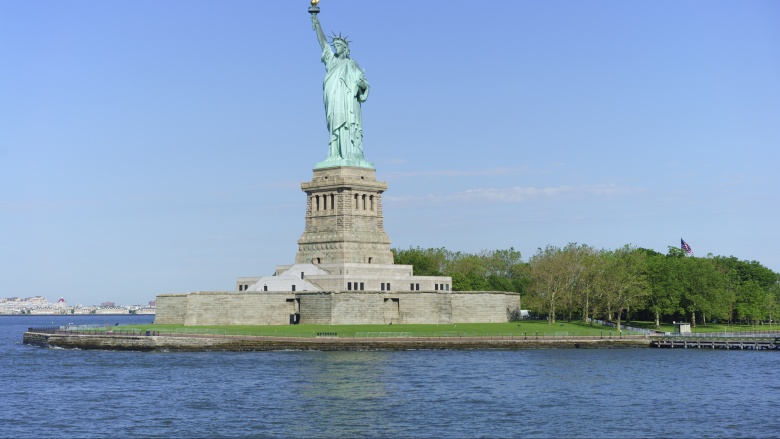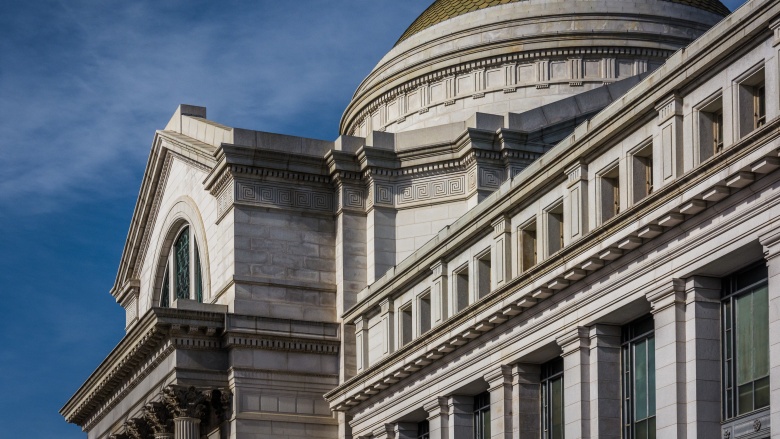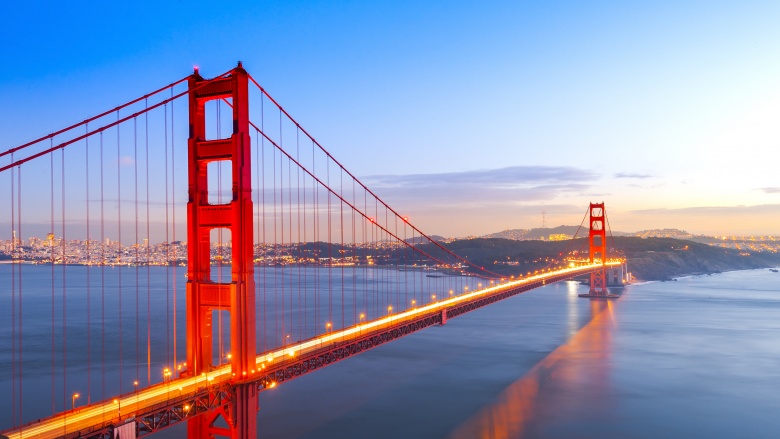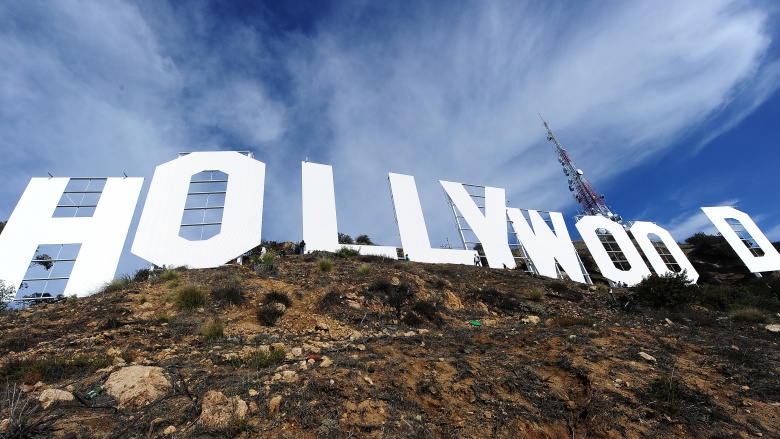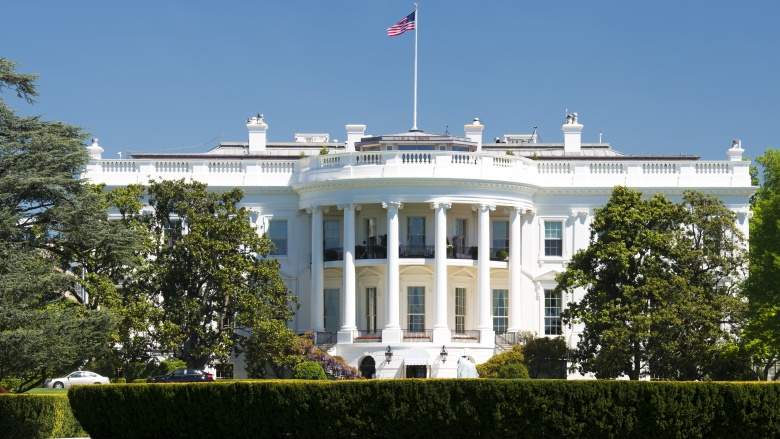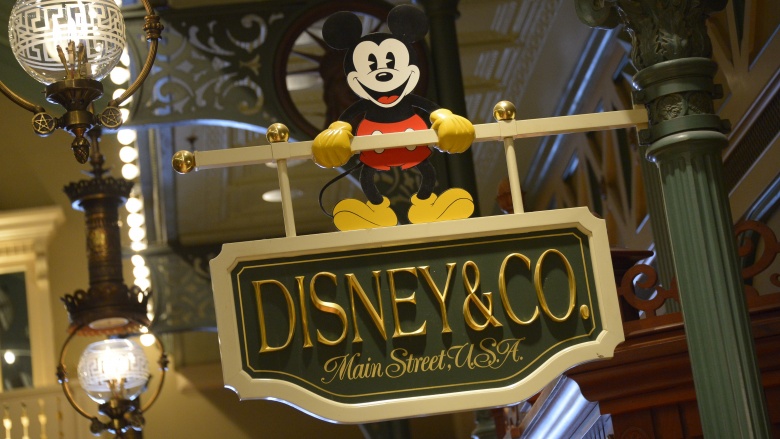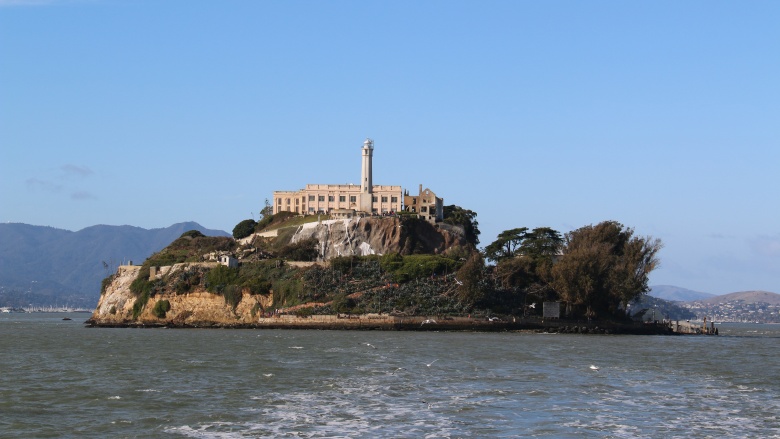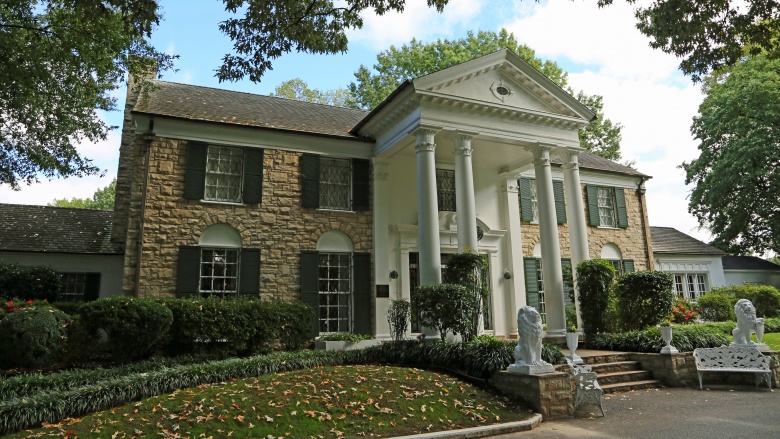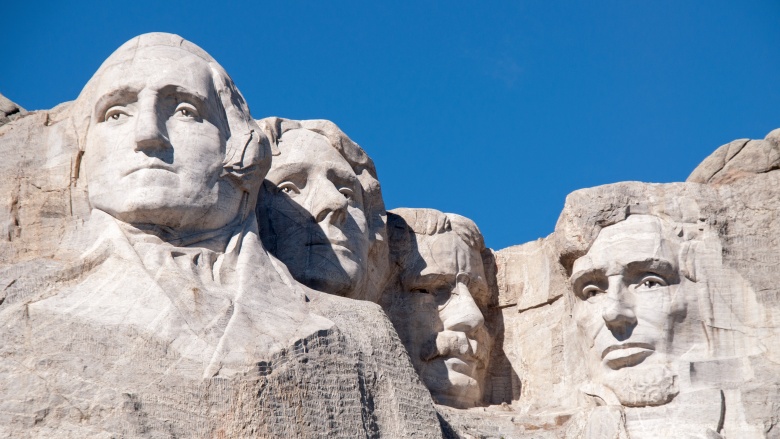Creepy Things That Happened At Famous American Landmarks
From sea to shining sea, America is dotted with both natural and man-made landmarks, one-of-a-kind wonders bursting with American history and pride. And, if eyewitness accounts are to be believed, they're also incredibly haunted. Here are some famous places around the U.S. where history ... and perhaps the dead ... come alive.
Empire State Building
The 86th floor observation deck on the New York City landmark provides amazing, panoramic views of the Big Apple ... and people used to jump off it, until a suicide-prevention fence was installed in the late 1940s. That's due to a rash of leapers in 1947, including 23-year-old Evelyn McHale, whose suicide note claimed that she didn't "think [she] would make a good wife for anybody" and that "he is much better off without [her]." A photo of McHale ran in Life magazine, picturing the dead woman who had landed atop a limousine.
McHale's ghost is said to haunt the Empire State Building to this day. Observers say they've seen a woman dressed in 1940s-style clothes on the observation deck, her eyes wet with tears. And then, she floats through the security fence and disappears to her "death," again and again.
If you or anyone you know is having suicidal thoughts, please call the National Suicide Prevention Lifeline at 1-800-273-TALK (8255).
Liberty Island
Before the Statue of Liberty's construction necessitated a name change to Liberty Island, the landmass in New York Harbor was called Bedloe's Island. There was also a military installation there called Fort Wood, where two soldiers named Gibbs and Carpenter were stationed in the late 1800s. Those two had heard an old legend that legendary pirate Captain William Kidd had buried his treasure there in the late 1600s (before he was hanged—for piracy, shock of shocks—in 1701). Gibbs and Carpenter wanted that loot, and went so far as to seek out the help of a psychic to tell them where on Bedloe's Island it was buried. So, they snuck out of their barracks in the middle of the night, went to the spot where they were told, started digging ... and found a box. They also found a skull.
The rest of the soldiers at Fort Wood were then awoken by the sound of Carpenter's screams. Troops found a distressed, hysterical Carpenter, and a passed-out Gibbs. When they calmed down, both Gibbs and Carpenter described having seen a terrible beast. Gibbs said it had black skin, horns, huge wings, and a barbed tail. Carpenter said that it was red and wingless. Nevertheless, when the site was explored come daybreak ... the treasure chest (and skull) were gone. Proof that the whole thing was faked? Proof that the demon took its treasure and is plotting a destructive comeback to this day? You be the judge.
The Smithsonian
As one of the premiere scientific research institutions in the United States, if not the world, there are a number of mummies and skeletons inside the halls of the Smithsonian. And with mummies and skeletons come ghosts, of course. Apparitions matching the description of early Smithsonian researchers have been spotted, including its first curator Spencer Baird, paleontologist Fielding Meek, and most importantly of all, founder James Smithson.
While he died before the Washington D.C. museum was built, Smithson's ashes were interred on its grounds in 1904. His ghost had been sighted so many times, the Smithsonian—a scientific place staffed by some of the world's most logical, rational, and scientific people—temporarily moved his body off the premises in 1973. (Just to inventory the contents of the casket, they said.)
The Golden Gate Bridge
Fog is a regular hazard of living in and around San Francisco, particularly as it gathers around the Golden Gate Bridge. In 1853, a clipper ship called the Tennessee ran aground at Golden Gate Strait, crashing onto the rocks at the beach because the crew couldn't see land, due to the thick fog.
Every now and then, especially when the fog is as thick as it was that day in 1853, witnesses say the Tennessee is visible passing under the Golden Gate Bridge. In November 1942, the U.S.S. Kennison military ship was also sailing by the famous bridge ... and passed the Tennessee up close. The Kennison's radar did not pick up any signals from that ship, even though its crew could see it. Witnesses say the Tennessee's decks were empty, and it disappeared after about a minute.
The Hollywood Sign
Peg Entwistle was an early 20th-century actress who'd enjoyed a few minor successes on Broadway, so in 1932, she moved out to Hollywood to try her luck in the burgeoning film industry. But by the end of that year, it became clear she would be unable to make a living as an actress. In a highly symbolic gesture of how the movie industry chews up and spits out their starlets, Entwistle climbed to the top of the 50-foot "HOLLYWOOD" sign that overlooks Los Angeles (she used a maintenance ladder on the backside), and jumped to her death.
Her ghost has been spotted many times near the sign, with some witnesses claiming to smell gardenias—Entwistle's perfume scent—even though there aren't any gardenias planted there. In 1990, a couple was hiking in Griffith Park, near the sign and encountered a blond woman wearing 1930s clothes ... who suddenly vanished.
The White House
President Ronald Reagan was very fond of telling White House guests the many times that his family (and dog) had encountered the ghost of President Abraham Lincoln, who unlike many ghosts, chose not to haunt the place where he died, but rather where he felt most alive.
One evening, Reagan's dog, Rex, wandered into the Lincoln Bedroom, only to quickly back out, whimpering. A few nights later, Ronald and Nancy were watching TV in their bedroom when Rex stood up on his hind legs, started sniffing toward the ceiling, and then barked at ... something up there. Reagan thought maybe the dog was bothered by some kind of high-pitched electrical signal—some kind of spying technology, perhaps—and had White House staff check it out. They didn't find anything out of the ordinary.
But some time later, Reagan's daughter, Maureen, and her husband, Dennis Revell, came for a visit and slept in the Lincoln Bedroom. Revell saw a tall, translucent figure standing at the window, before it suddenly disappeared. Believed to be the ghost of Lincoln, it also once spooked Winston Churchill so much (he'd just gotten out of the bath and was completely naked), that he refused to sleep in the Lincoln Bedroom ever again. And one time, it knocked on the bedroom door when Queen Wilhelmina of the Netherlands was staying there. When she opened the door, there stood Honest Abe, and she fainted.
Disneyland
Disneyland is the spookiest place on Earth! That's because it's supposedly haunted by its creator and namesake, Walt Disney. There's an apartment above the fire station in the park's Main Street area that was once a real, functioning apartment—Disney would sleep there if he was working late at the park. Since his death in 1966, his office has been maintained in his memory. One time, a park employee went into the apartment for some routine dusting and cleaning and turned the lights off when she left. She left but realized they were still on, so she went back to kill them. Then it happened again, and when she went to turn them off for the third time, she heard a voice say, "I am still here." Forget whistling: "Scream your head off while you work" was probably that poor woman's song of the day. The lights have been kept on since then, a kind of "perpetual flame" honoring Uncle Walt's memory and influence.
Alcatraz
As a military stockade in the 19th century, and a federal prison in the 20th century, Alcatraz Island has seen a lot of brutal punishment, along with the incarcerated looking for any possible way out. Plenty committed suicide, and many more tried and fatally failed to escape the island by braving the frigid waters.
But no area of the island is spookier than Cell 14-D, also known as "solitary confinement." In the 1940s, one unlucky inmate was thrown in there and screamed all night long ... not because he found solitary that torturous, but because he wasn't solitary at all. He yelled and pleaded that something with glowing eyes was in the cell with him. Eventually, the screaming subsided, but when guards went to check on him in the morning, they discovered the prisoner had been strangled to death.
Graceland
Elvis Presley spent much of his latter years holed up in his fortified Memphis estate (named after his mother, Grace), living, working, eating, and shooting TVs. In 1977, he died in one of the house's many bathrooms at the relatively young age of 42, and some say Elvis has never quite left the building.
Graceland is now a Presley museum and tourist attraction, and sightings of his ghost are commonplace, with many guests claiming to have captured an image of the ghostly King on film or video. Even Presley's widow, Priscilla Presley, says she feels like she's going to run into her husband's ghost whenever she visits.
Mount Rushmore
No workers died during the construction of the monument in the 1920s and 1930s, but many did die of silicosis, a lung problem caused by prolonged exposure to silica dust (which they got from chipping away at rock for decades on end). Some of those workers were so proud of their contribution to this great American landmark that they chose to be buried in Keystone Cemetery, which offers a breathtaking view of the four presidents' heads in stone.
Oh, and ghosts. Keystone Cemetery apparently offers ghosts. Cemetery visitors have reported white, wispy figures walking through the forests that surround the graveyard. And then there's one woman who reported seeing a growling black figure, which could be a snarling demon of the dark, or simply the ghost of Andrew Jackson still fuming that nobody wants to carve his head into anything.

